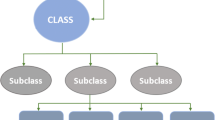Abstract
This study aimed to investigate technological evolution from the perspective of the US Patent Classification (USPC) reclassification. Similar to the revisions of the Dewey Decimal Classification, a commonly used library classification scheme, USPC reclassification takes the forms of creating, abolishing or modifying USPC class schedules. The results showed that there exist significant differences among five types of patents based on the USPC reclassification: Patents reclassified to Class 001 (classification undetermined), Patents with Technological Inter-field Mobilised Codes, Patents with Technological Intra-field Mobilised Codes, Patents with Abolished Codes, and Patents with Original Codes. Patents reclassified to Class 001, mostly related to the topic of “Data processing”, performed better than other patents in novelty, linkage to science, technological complexity and innovative scope. Patents with Inter-field Mobilised Codes, related to the topics of “Data processing: measuring, calibrating, or testing” and “Optical communications”, involved broader technology topics but had a low speed of innovation. Patents with Intra-field Mobilised Codes, mostly in the Computers & Communications and Drugs & Medical fields, tended to have little novelty and a small innovative scope. Patents with Abolished Codes and patents with Original Codes performed similarly—their values of patent indicators were low. It is suggested that future research extend the patent sample to subclasses or reclassified secondary USPCs in order to understand the technological evolution within a field in greater detail.






Similar content being viewed by others
Notes
According to the USPTO (2012b), US PGPub documents classified in the USPC are assigned one, and only one, principal mandatory classification, known as the Primary Classification (PR).
References
Chan, L. M. (2011). Cataloguing and classification: An introduction (3rd ed.). Maryland: The Scarecrow Press Inc.
DeHart, F. E., & Meder, M. D. (1987). Structure in computer science: DDC reflections. Technical Services Quarterly, 4(3), 41–54.
Dunnett, C. W. (1980). Pairwise multiple comparisons in the homogeneous variance, unequal sample size case. Journal of the American Statistical Association, 75(732), 789–795.
Gupta, V. K. (2006). References to literature in patent documents: A case study of CSIR in India. Scientometrics, 68(1), 29–40.
Hall, B. H., Jaffe, A. B., & Trajtenberg, M. (2001). The NBER patent citation data file: Lessons, insights and methodological tools (No. w8498). National Bureau of Economic Research.
Howell, D. (2002). Statistical methods for psychology (5th ed.). Pacific Grove, CA: Duxbury/Thomson Learning.
Maltby, A. (1975). Sayer’s manual of classification for librarians (5th ed.). London: Andre Deutsch.
Narin, F. (2000). Tech-line® background paper. In J. Tidd (Ed.), From knowledge management to strategic competence (pp. 155–195). London: Imperial College Press.
New, G. R. (1998). Custer and the modernisation of Dewey. Cataloging & Classification Quarterly, 25(2–3), 133–149.
Online Computer Library Center. (2013). New features in DDC Edition 23. https://www.oclc.org/content/dam/oclc/dewey/versions/print/new_features.pdf. Accessed April 10 2015
Pantros IP. (2013). Patent factor reports. http://admin.patentcafe.com/reports/pantrosip_reports/patentfactor_terms.pdf. Accessed Jan 7 2015
Scott, M. L. (1998). Dewey decimal classification, 21st edition: A study manual and number building guide. Westport, Connecticut: Libraries Unlimited.
Strumsky, D., Lobo, J., & van der Leeuw, S. (2012). Using patent technology codes to study technological change. Economics of Innovation and New Technology, 21(3), 267–286.
Sung, H., Wang, C., & Huang, M. (2015). A preliminary study of technological evolution: From the perspective of the USPC reclassification. In The 15th international society of scientometrics and informetrics conference, 2015 (pp. 847–858)
Sung, H., Wang, C., Huang, M., & Chen, D. (2015b). Measuring science-based science linkage and non-science-based linkage of patents through non-patent references. Journal of Informetrics, 9(3), 488–498.
Taylor, A. G. (2006a). Teaching the Dewey decimal classification system. Cataloging & Classification Quarterly, 42(3/4), 97–117.
Taylor, A. G. (2006b). Introduction to cataloging and classification (10th ed.). Westport, Connecticut: Libraries Unlimited.
USPTO. (2012a). Classification Orders Index (COI). http://www.uspto.gov/patents/resources/classification/orders/coi.jsp. Accessed Jan 10 2015
USPTO. (2012b). Overview of the US patent classification system (USPC). http://beta.uspto.gov/sites/default/files/patents/resources/classification/overview.pdf. Accessed Jan 7 2015
USPTO. (2013a). Access classification information by symbol. http://www.uspto.gov/web/patents/classification/index.htm. Accessed Jan 7 2015
USPTO. (2013b). Classification order archival report. http://www.uspto.gov/patents/resources/classification/archiverpt.pdf. Accessed Jan 7 2015
Author information
Authors and Affiliations
Corresponding author
Rights and permissions
About this article
Cite this article
Wang, CC., Sung, HY. & Huang, MH. Technological evolution seen from the USPC reclassifications. Scientometrics 107, 537–553 (2016). https://doi.org/10.1007/s11192-016-1851-3
Received:
Published:
Issue Date:
DOI: https://doi.org/10.1007/s11192-016-1851-3




